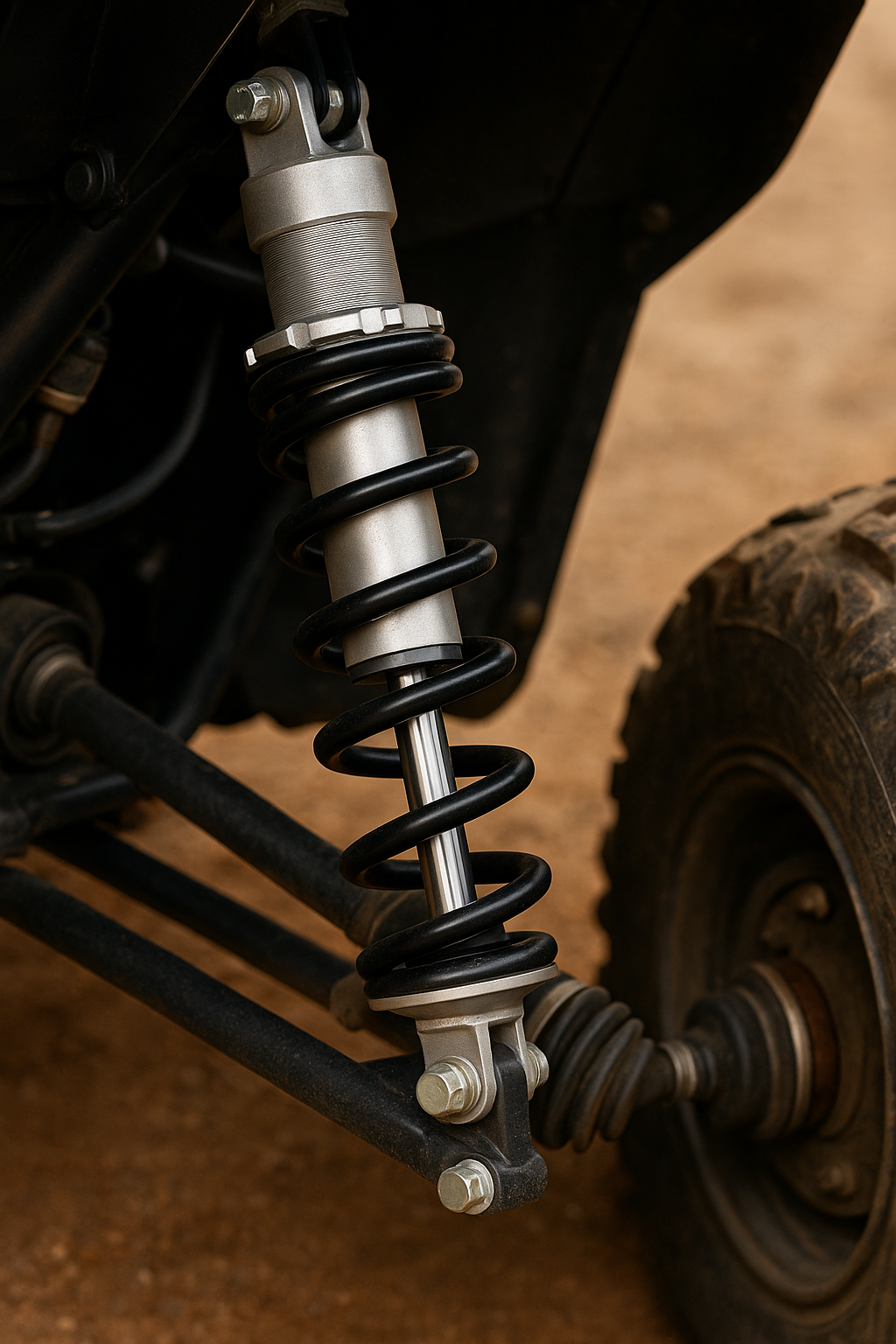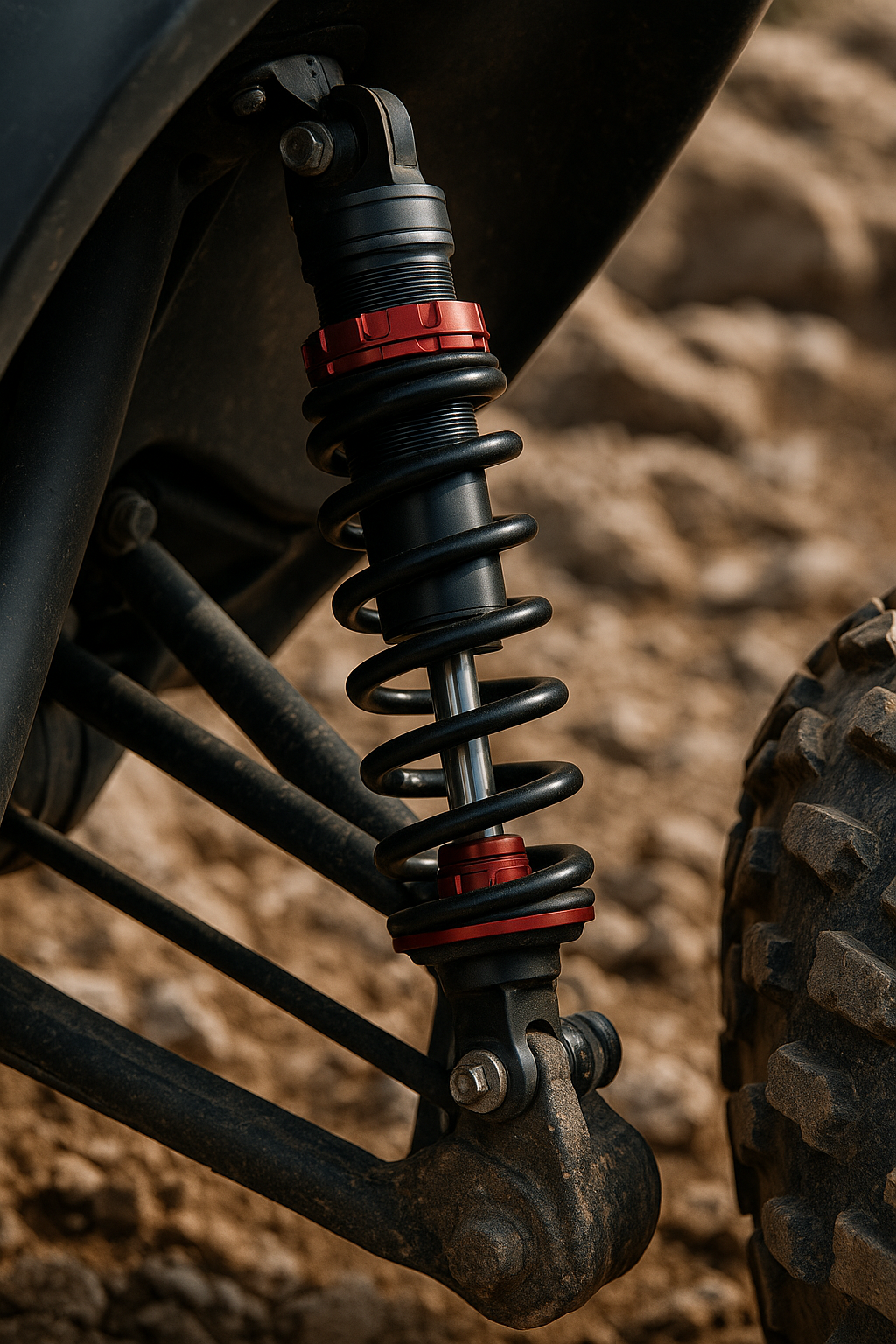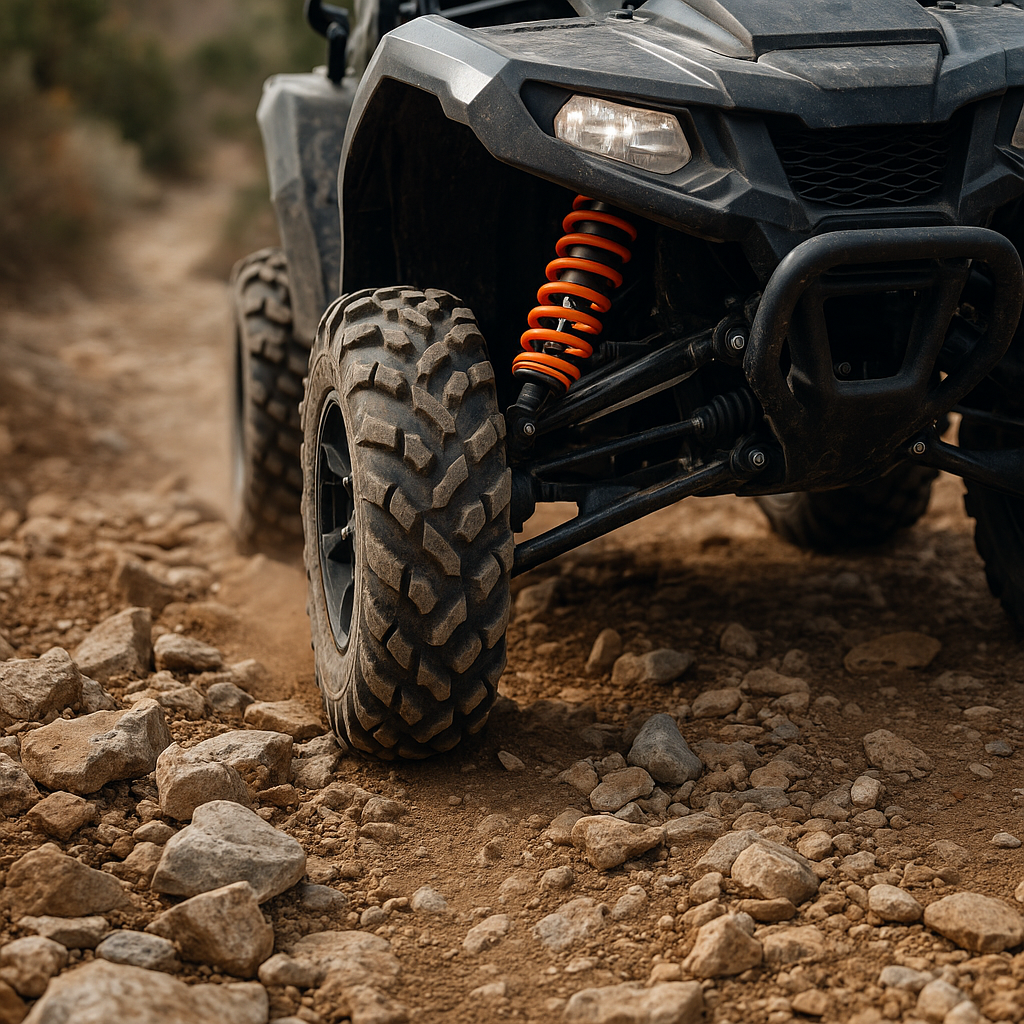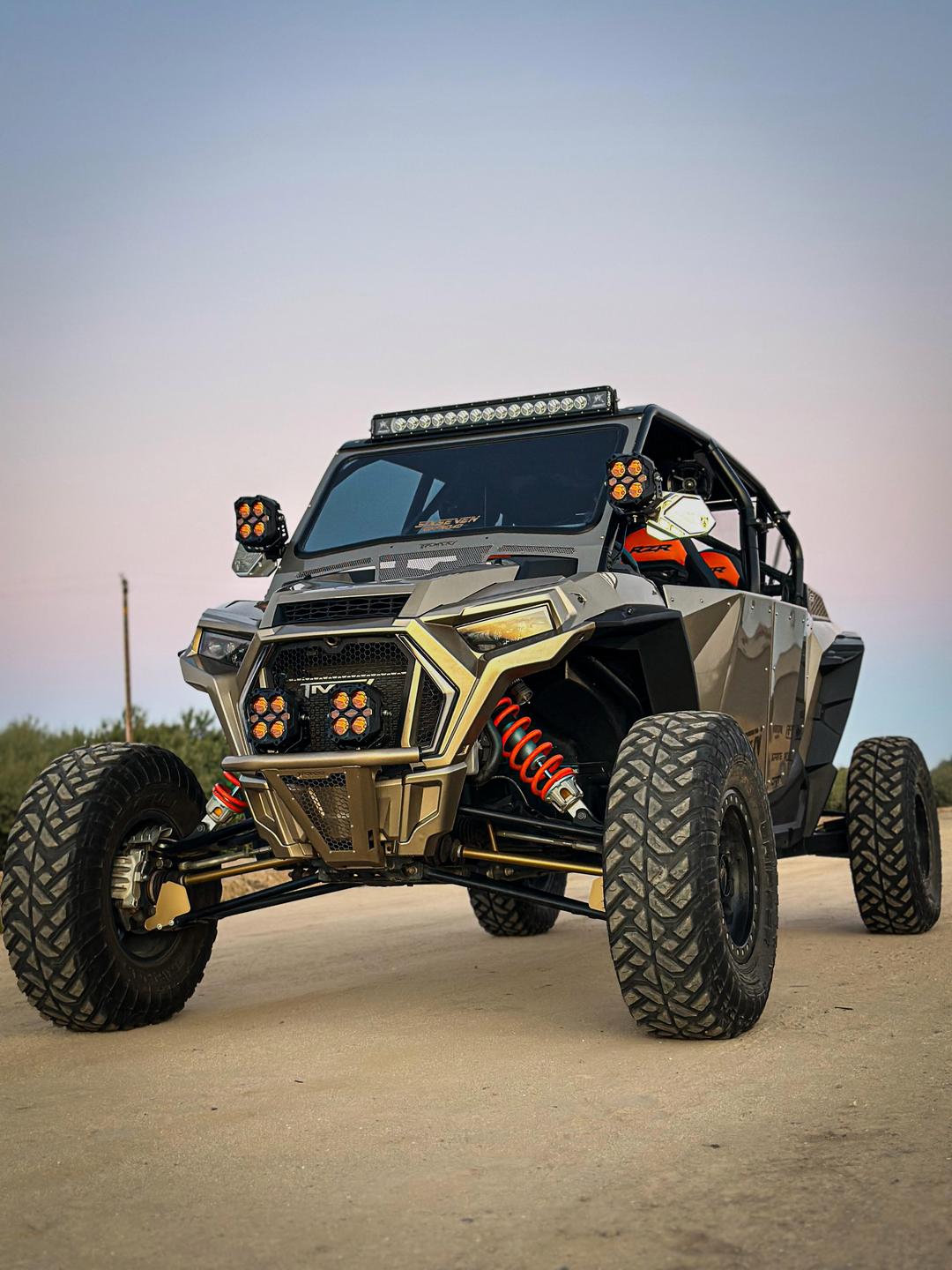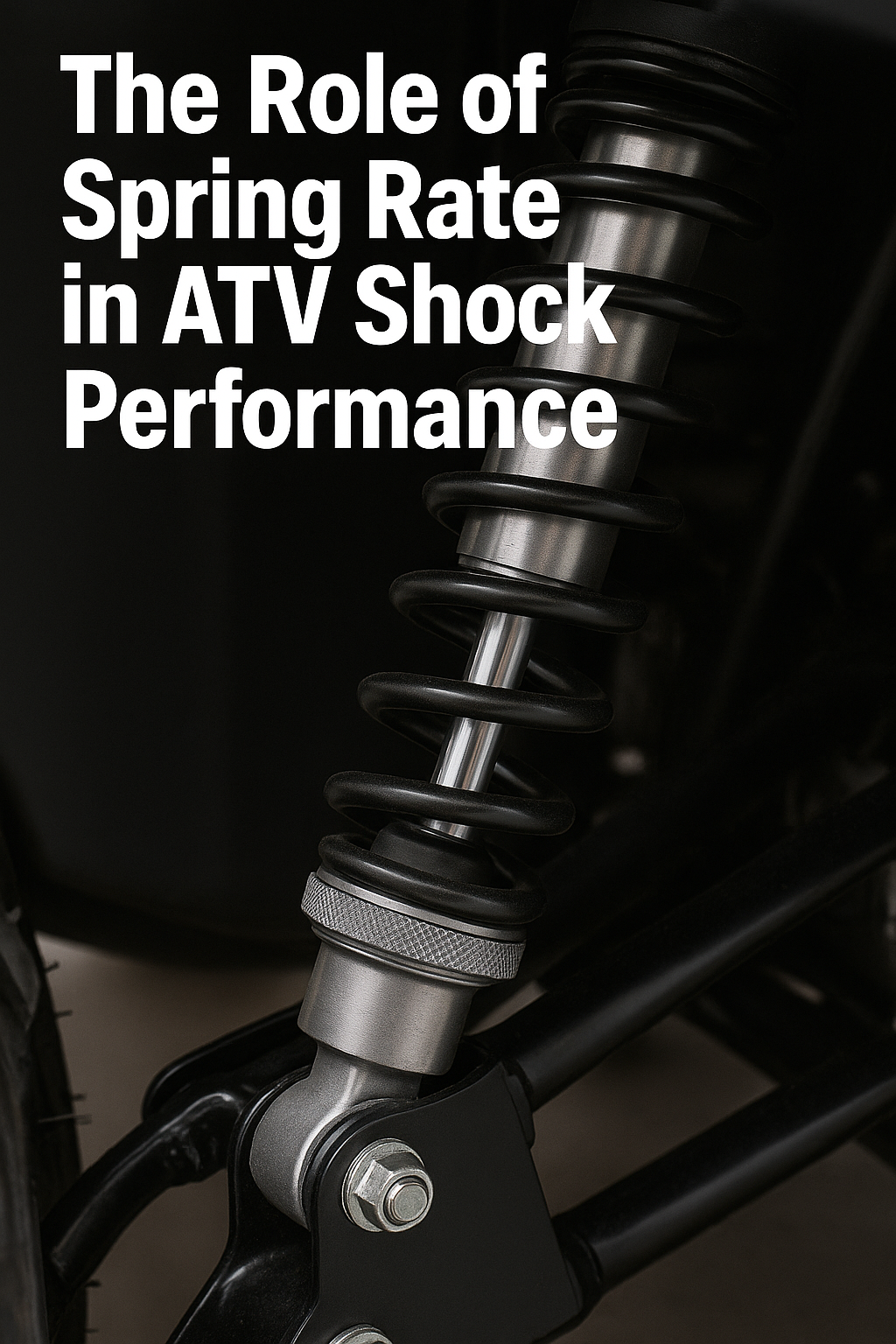
The Role of Spring Rate in ATV Shock Performance
What Is Spring Rate—and Why It Matters Off-Road
In an ATV suspension system, the spring isn't just holding weight—it's defining how that weight behaves over terrain. Spring rate refers to how much force is needed to compress the spring by a given distance (usually in lbs/in or N/mm).
A higher spring rate resists compression more aggressively. A lower rate compresses more easily.
But this number doesn't exist in isolation. It directly interacts with shock damping, load transfer, ride height, and terrain frequency. That makes spring rate one of the most influential—but often misunderstood—elements in suspension tuning.
How Spring Rate Affects ATV Shock Behavior
Spring rate impacts the following key aspects of suspension performance:
1. Initial Ride Height and Sag
Too soft a spring = excess sag under static weight → reduced ground clearance, bottom-out risk
Too stiff a spring = reduced travel range → poor compliance, bouncy ride
2. Impact Absorption and Damping Balance
A spring that's mismatched with the shock valving (damping force) leads to imbalance:
-
Under-damped = oscillation, instability
-
Over-damped = harshness, fatigue
Proper valving-to-spring rate ratio ensures shocks don’t work against the springs—but with them.
3. Terrain Matching
High-speed desert riding = higher spring rate with rebound control
Low-speed rocky trails = softer spring with progressive preload
Cargo-heavy utility use = linear spring + high preload for sustained load
There’s no universal rate. It must match real terrain use, not just static vehicle mass.
Why Factory Rates Often Miss the Mark
Most standard ATV shocks come with a generic spring rate—designed for average use. But “average” doesn't cover:
-
Dual-rider setups
-
Tool racks and cargo loads
-
Regional terrain differences
-
Tires with different diameter or PSI profiles
Over time, even a well-chosen spring rate can degrade or become mismatched as usage changes. That’s why high-performance suspension isn’t just about the shock—it’s about how the spring rate is tuned into the entire system.
Bedo's Approach to Spring Rate in Shock Design
At Bedo, we don’t treat spring rate as an afterthought. It's part of our performance-first engineering workflow:
-
Application-based rate selection: trail, sand, utility, mixed
-
Progressive vs. linear spring matching
-
Adjustable preload options based on load profile
-
Low-deflection materials for long-term consistency
-
Damping validation matched to spring behavior, not just spec
We test spring behavior under real vertical and lateral loads—not just dyno values.
The Right Spring Rate Unlocks the Shock’s Potential
You can have a perfectly built ATV shock, but if the spring rate isn’t right for the job—it won't perform. Suspension works as a system, and spring rate is one of the first decisions that defines everything downstream: ride height, rebound speed, stability, comfort, and fatigue resistance.
Whether you’re tuning for control, capacity, or consistency, spring rate is never just a number—it’s a reflection of how seriously you take the terrain.
Explore our shock and spring systems
Talk to our engineers about spring tuning options


